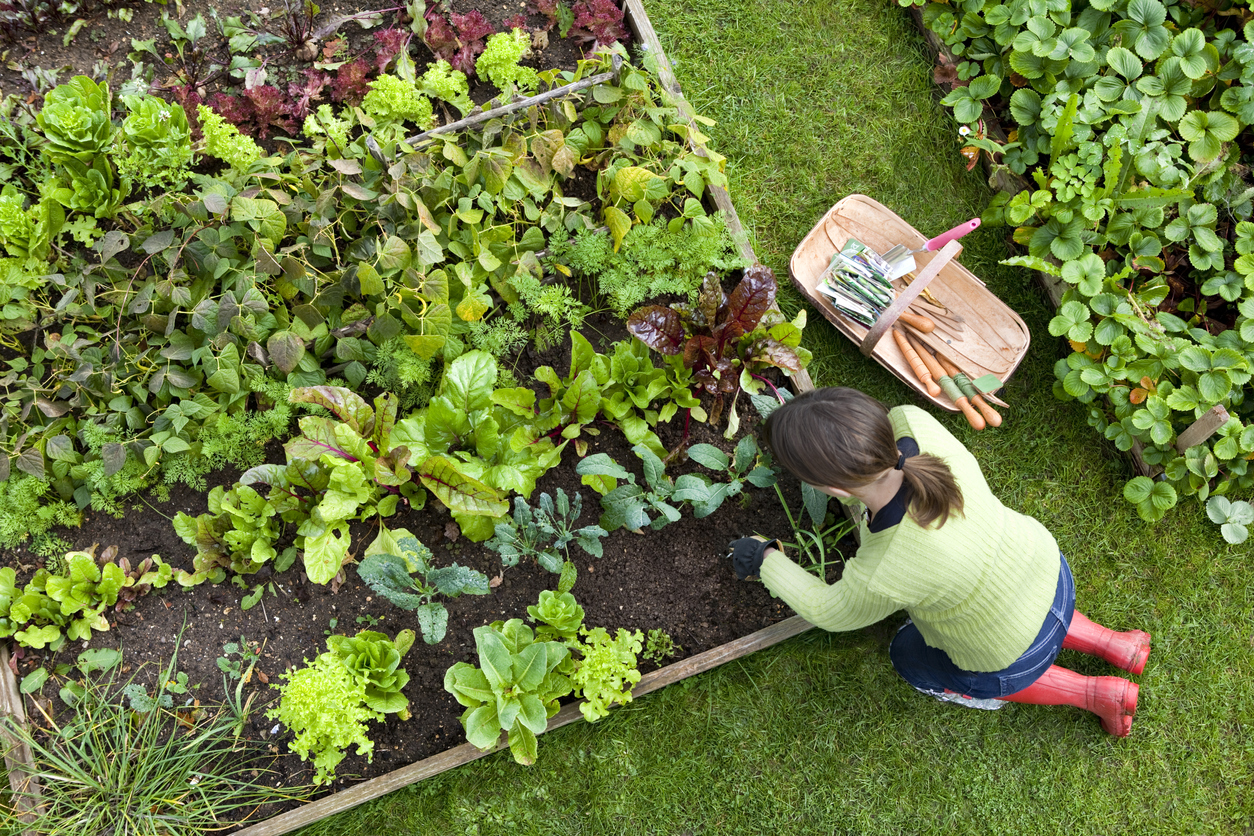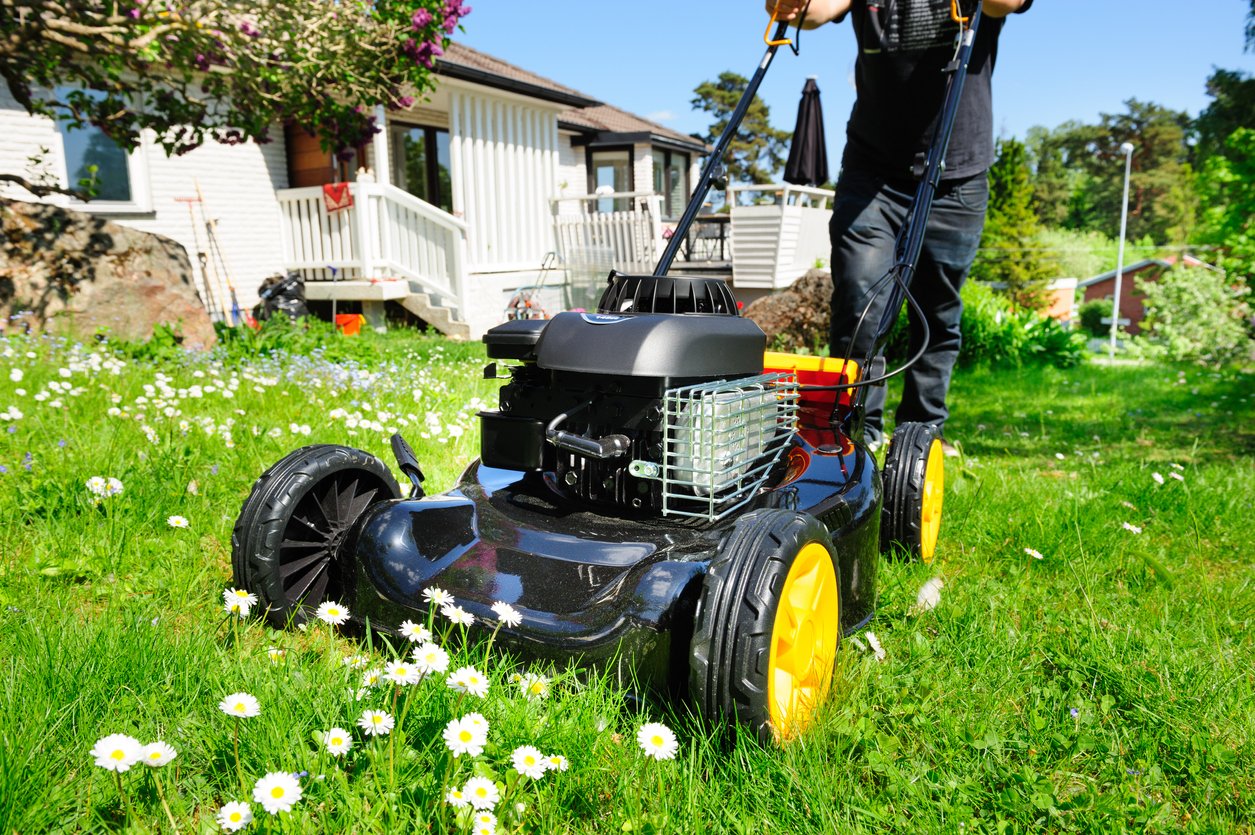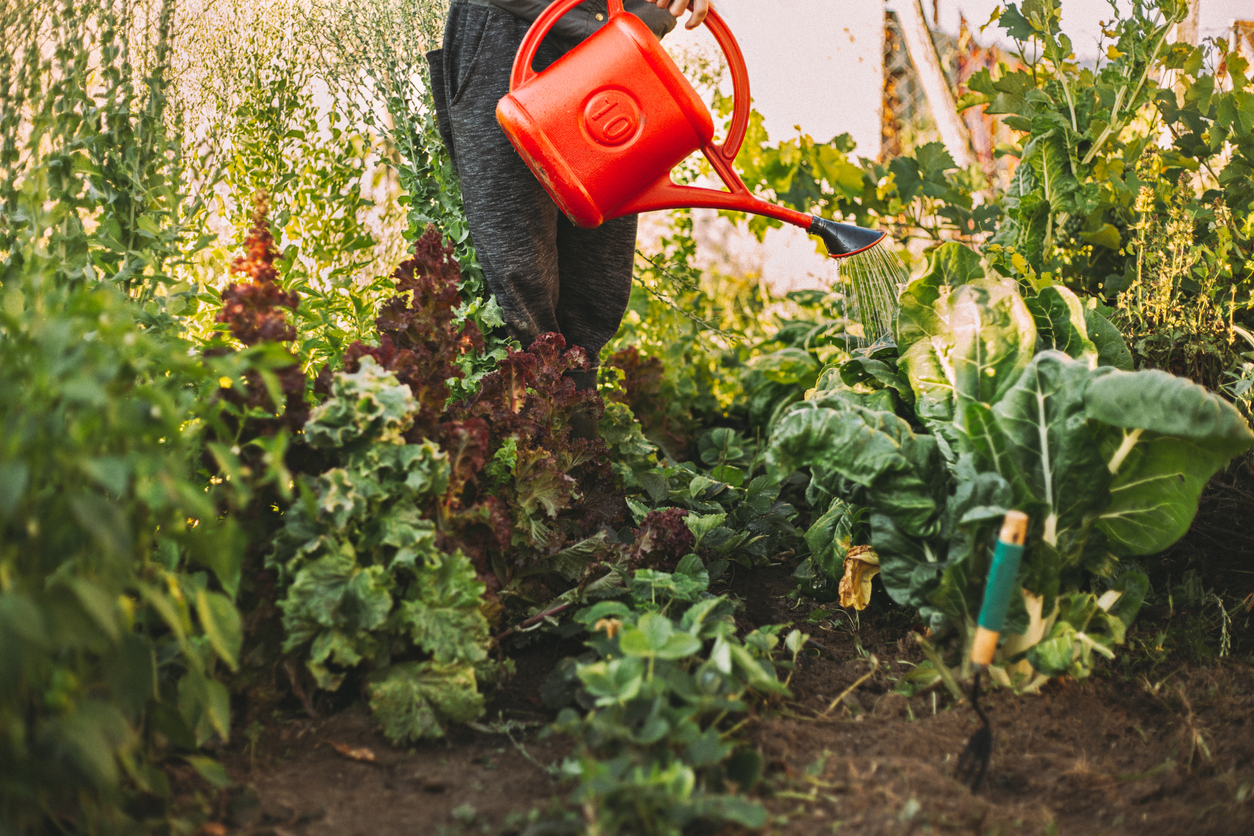In many countries today, well-maintained, closely cut, green lawns are almost everywhere. They’re a hallmark of homeownership and, depending on their level of landscaping and maintenance, can be a showcase for wealth and status. In fact, lawns are the single largest irrigated crop in the U.S., covering nearly 32 million acres. But green lawns don’t actually produce any crops you would find in edible gardens.
On the other hand, fruits and vegetables grow on only about 10 million acres in the United States. This means the space that American lawns occupy could provide enough land to grow three times as many fruits and vegetables if utilized properly.
Lawns May be Beautiful, but…
In addition to lawns taking up valuable soil and potential cropland, lawns are very demanding of time, money, and resources.
Americans spent around $29 billion in lawn care in 2015. And every quarter acre of lawn takes around 21 hours of annual maintenance.
And lawns have a significant environmental impact, too. The typical American lawn uses 10,000 gallons of supplemental water (not including rainwater) annually. This is a serious problem, especially as we see more and more areas facing water shortages and droughts.
Of course, edible gardens need watering too. But data pulled together by Urban Plantations from the EPA, the Public Policy Institute of California, and the Alliance for Water Efficiency suggests that gardens use 66% less water than lawns.
Chemicals in Lawn Care
We spray a lot of chemicals on our lawns, too. In fact, close to 80 million U.S. households spray 90 million pounds of pesticides and herbicides on their lawns each year, according to the EPA.
These are just a few of the problems caused by lawn pesticides:
- They contaminate our water supply. A study from Virginia Tech found that most homeowners apply chemicals to their lawns in ways that pollute our drinking water.
- They create serious health risks for wildlife and pets. A 2013 study published in Science of the Total Environment found that dogs exposed to lawn care chemicals can have a higher risk of bladder cancer.
- They get into our homes and present health risks. They are correlated with an increased risk of a variety of cancers, nervous system disorders, and other illnesses.
- Children are affected. Research in the Journal of the National Cancer Institute found that exposure to lawn pesticides can increase the risk of childhood leukemia almost seven times.
Not mincing words on the topic, an article in Organic Gardening went so far as to say, “lawn care is as much of a danger to our health and the environment as conventional agriculture is.”
Lawn care often depends on mowers and other lawn care equipment that use gas for its fuel. And all that gas adds up. Americans use about 800 million gallons of gas, mowing their lawns each year. In fact, the EPA estimates that gas-powered lawn and garden equipment is responsible for 5% of U.S. air pollution, not to mention the noise pollution these machines cause.
Turning a Lawn into an Edible Garden
As concern over climate change and its far-reaching effects — including food insecurity and shortages — increases, more and more people are ditching their lawns in favor of edible gardens. One in three Americans now grows food at home or in a community garden.
However, there has been resistance from local lawmakers and homeowners associations. Many cities have banned edible gardens, especially when placed in a front yard. Consequences range from citations to fines to, in extreme instances, jail time. But some homeowners are fighting back.
A Florida couple went to court against their town after being slapped with a $50/day fine for growing food in their front yard. Although they initially lost, the state ended up passing a law in July 2019 that prohibits towns from banning edible gardens for aesthetic reasons.
And in California, a bill passed in 2014 that allows for “personal agriculture” in order to reduce food costs for those in poverty.
Despite the challenges you might be faced with if you decide to transform a lawn into a garden, the benefits are high.
9 of the Top benefits from Growing Your Own Food:
- You and your family will be more likely to eat fresh vegetables and fruits — and that’s a very good thing for your health.
- The fruits and veggies you eat will have more nutrients. The average plate of food travels 1,500 miles before it gets to your plate, and nutrients are lost during this process. Fresh and local are best – and you can’t get fresher or more local than your own garden!
- The fruits and vegetables you eat could be safer. Food safety is an increasing problem due to contamination from Salmonella, E. coli, and other pathogens from factory farms. Home gardens may not have that issue. And if you grow your garden organically, you can also avoid pesticide residues on your produce. Note: Car exhaust and other outdoor pollutants can damage soil and plants. To ensure you have healthy soil, get yours tested by a lab (like this one). You can also plant in containers, or keep fruits and vegetables away from the road or your driveway.
- You can save money. Organic food is healthier and better for the planet – but it can be costly to buy. When you grow your own, you can save money on groceries.
- Vegetable gardens are ecologically responsible. They reduce your carbon footprint, save the environment, and are more efficient and less wasteful than lawns or flower gardens.
- They’re good for your spirit and your health. Gardens increase your time outdoors, relieve stress, make you more relaxed, and even boost your immune system.
- Gardens increase community. Americans are increasingly disconnected. But getting together with family, friends, and neighbors to grow and share food and knowledge can bring people together.
- Vegetable gardens teach children vital life lessons. Many kids love playing in the dirt. And gardening can teach them important lessons, including the ability to grow their own food and take charge of their health.
- They’re good for food independence and food security. There’s a wonderful feeling of freedom and self-reliance that comes with growing your own food.
Need help starting your own edible garden? Check out the books Food Not Lawns or The Edible Front Yard for more tips. Or you can also contact an edible garden landscaping company like the ones mentioned here.
Tell us in the comments:
- Do you have a lawn? Why or why not?
- Do you grow fruits or vegetables? Why or why not?
- Have you or anyone you know ever replaced a lawn with an edible garden?
Featured Image: iStock.com/cjp





